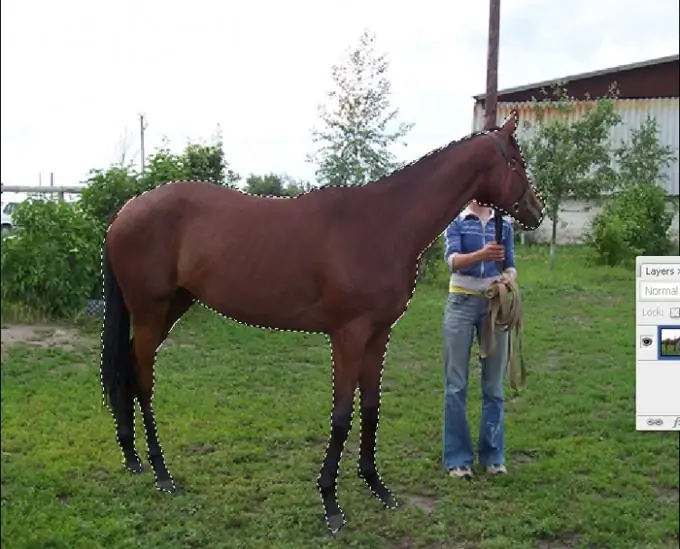When creating collages in Photoshop, you often have to cut out individual fragments and transfer them to another image. It is necessary to do this so that the transferred objects fit organically into the new drawing and do not give the impression of foreign elements.

Necessary
Adobe Photoshop photography
Instructions
Step 1
Press the L key. A window appears on the toolbar in which you can select one of the tools in the Lasso group.
Step 2
Polygonal Lasso is suitable for selecting objects with broken outlines. Using the Lasso Tool, the object is selected manually. Move the cursor over the object outline, press the left mouse button and, without releasing it, circle the entire object. When the path is closed, release the key - the object will be selected. If by mistake you mark an area you don't want, press the Backspace key to undo the wrong action.
Step 3
Magnetic Lasso analyzes the difference between the colors of the main contour and the background and, as it were, "sticks" to the silhouette of the object. On the property bar, set the following options:
- Feather - blur of the selection, in pixels
- Width - the width of the strip that the tool will analyze to distinguish the object from the background
- Edge Contrast - the difference in color tone between the object and the background, in percentage
- Frequency - the frequency with which the tool will "cling" to the image.
Step 4
Move the cursor over the object and press the left mouse button to set the initial data for the tool. Then release the key and move the cursor along the path. If in some area the background and object colors are very close, move the cursor over the object again and press the left key to set new parameters. If the background is marked, press the Backspace key to undo the erroneous steps. To complete the process, double-click the left mouse button.
Step 5
Another way to select an object is with Quick Mask mode. Press the Q key and select the Edit in Quick Mask Mode button. The foreground and background colors on the tool palette should be set by default, for this press the D key. Select a hard brush and start painting over the object in the image. If you captured an extra area, swap the black and white squares in the toolbar and remove the mask with a white brush. After you paint over the whole object, press the Q key again - this way you will return to standard mode. The entire image around your subject will be selected. From the main menu choose Select and Inverse. After that, the selection will go to the object.
Step 6
After you have selected part of the image in one way or another, you need to save it to the memory buffer. If you want to remove a fragment from the image, press the Ctrl + X keys or select the Edit and Cut items in the main menu. If you just need to copy the object, use the Ctrl + V combination - the image will not change, and a copy of the selected fragment will be saved in the program memory.
If necessary, open a new image and add the copied object there using the Ctrl + C keys.






